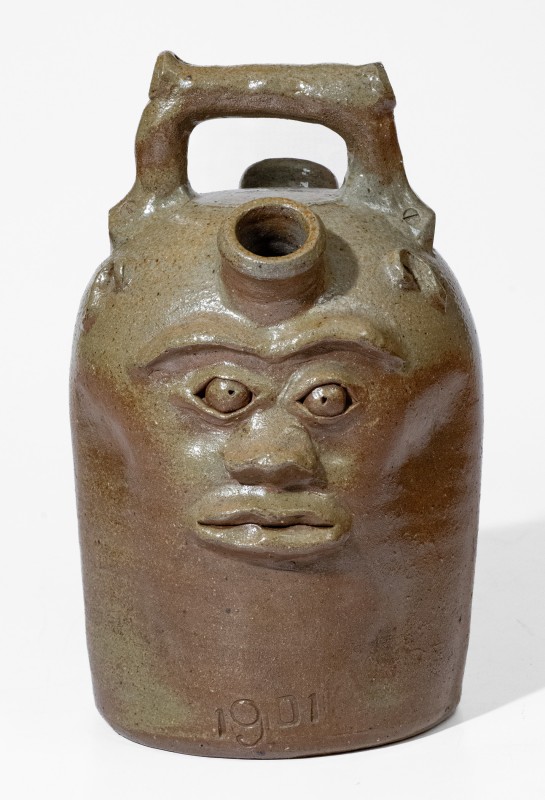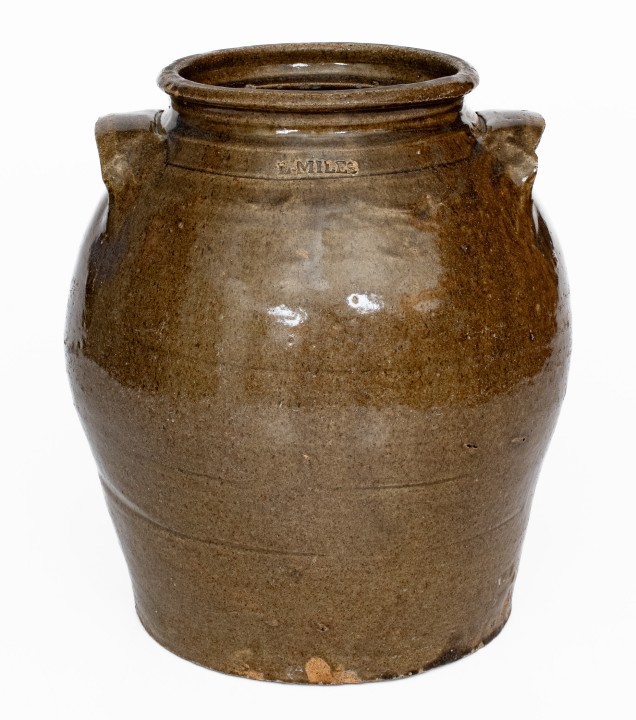Sold! $8,000.
Extremely Rare Four-Gallon Salt-Glazed Stoneware Jar with Iron Slip Tree Decoration, probably TX origin, possibly John Chandler or an associate, third quarter 19th century, ovoid jar with flattened rim and arched lug handles, brush-decorated in reddish-brown iron slip with a large stylized design of a tree with splayed branches, emanating from a mound at the base. Surface covered in a clear salt glaze, possibly over a light alkaline glazed coating. The wonderful folk painting that dominates the front of this vessel probably represents a palmetto or willow tree indigenous to the American South. The use of freehand iron slip decoration (extremely rare on salt-glazed stoneware), as well as the form and handle construction, strongly relate this jar to the Edgefield, South Carolina, potting tradition. The flattened rim, less common in Edgefield stoneware, is closely related to those found on pieces made at the Guadalupe County, Texas pottery of Presbyterian minister and educator, John Wilson, circa 1857-1869. Wilson, a pottery owner rather than a potter himself, used enslaved African-Americans to produce his ware; these included the later founders of H. Wilson & Co., Hiram, James and Wallace Wilson. Between 1860 and 1866, a white potter, Marion J. Durham, and African-American potter, John Chandler, both from Edgefield, worked at this site. Chandler had previously been enslaved by well-known Edgefield potter, Thomas Chandler, noted for his frequent use of brushed iron and slip-trailed kaolin slips to decorate his ware. The strong Edgefield influence seen in the jar's decoration and form, mixed with obvious differences in its distinctive rim molding and salt-glazed surface, suggest this may be a Texas product of the John Wilson pottery, made by John Chandler or an associate. Provenance: Recently surfaced in Alabama. Excellent condition with only minor flaws: some faint surface crazing to reverse, not visible on interior and likely in-the-firing; minor surface wear; minor in-the-firing pings; and flakes to interior base. H 14 3/4".










